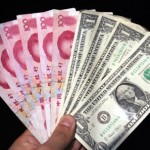The euro continued to gain against the US dollar on Friday, despite that US personal income and personal expenditures came in consonance with forecasts, but consumer confidence index slowed down, according to official data, while the lack of clarity over the future of Federal Reserve Banks stimulus program was boosted additionally by comments made by Charles Evans, Fed President for Chicago.
EUR/USD reached a session high at 1.3563 at 14:05 GMT, also the pairs highest point since September 19th, after which consolidation followed at 1.3546, up by 0.42% for the day. Support was likely to be received at September 25th low, 1.3462, while resistance was to be met at September 19th high and also a seven-month high, 1.3568.
The euro received a boost after Fed President for Chicago Charles Evans said that the central bank may not begin tapering its monthly bond purchases in October, as some experts had anticipated. Traditionally an upholder of Quantitative Easing, Evans stated that a possible tapering of Feds stimulus could happen in October, December or January. This triggered a new dose of uncertainty regarding the future of Federal Reserves monetary policy.
In addition, personal income of US consumers increased by 0.4% in August on a monthly basis, meeting projections, after the revised up 0.2% gain in July from a 0.1% gain previously. Personal spending also increased in August, by 0.3% on a monthly basis, again in line with forecasts, after the revised up 0.2% climb in expenditures in July. The slow improvement, demonstrated by the US labor market, and economic recovery appeared to have facilitated the increase in remunerations, while this, on the other hand, might increase the willingness of consumers to spend more and, thus, provide support to growth. US households increased their spending on durable goods such as automobiles and refrigerators, as this suggested almost no restraints, despite raised interest rates during late spring season. The price index of core personal consumption expenditures, which excludes volatile components such as food and energy, rose 0.2% in August on a monthly basis, after it climbed 0.1% in July. The annual performance of the index also showed improvement, as the indicator advanced 1.2% in August, following the revised down 1.1% increase in July. These data points are of utmost importance for economic recovery, because consumer spending contributes to almost two thirds of the US Gross Domestic Product.
Another report said that the final reading of the index, gauging consumer confidence in the United States, recorded a drop to a value of 77.5 in September, marking its lowest point since April, after advancing to 82.1 in August. Experts had anticipated that the index will demonstrate a lesser drop, to a reading of 78.0.
Meanwhile, in the Euro zone, business sector and consumers demonstrated the greatest optimism in two years in September, as this might probably be another signal that the process of returning to growth in the common currency bloc could continue during the coming months. According to data by the European Commission, the Economic sentiment indicator (ESI) for the Euro zone rose to a value of 96.9 in September, reaching its highest point since August 2011, from 95.3 in August. Alongside the most recent PMI data in manufacturing and services sectors in the region, the sentiment indicator also pointed that economy probably continued to expand during the third quarter of the year. Economic sentiment recorded the best results in countries such as Italy and Spain, while confidence seemed to have weakened in the Netherlands.
Also, a report revealed that the preliminary value of the German consumer price index (CPI) remained flat in September on a monthly basis in line with expectations, while the annual CPI showed a slight slow down to 1.4% in September from 1.5% a month ago.
Elsewhere, the euro was steady against the pound, with EUR/GBP cross dipping 0.05% to trade at 0.8407 at 14:06 GMT. EUR/JPY pair was falling 0.25% to trade at 133.20 at 14:07 GMT.





